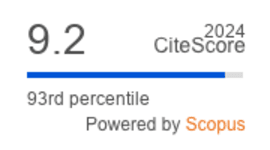Identification and Characterization of Arcanobacterium canis from Companion Animals in Germany and The United Kingdom
DOI:
https://doi.org/10.36877/pmmb.a0000391Abstract
Arcanobacterium canis is a novel species of the Arcanobacterium most closely related to A. haemolyticum. This study aims to characterize two A. canis isolates recovered from companion animals, specifically the claw of a cat and a vaginal swab from a dog. This study used real-time PCR to characterize A. canis isolated from companion animals. Two isolates of A. canis were recovered from purulent material from the claw of an 11-year-old cat in Germany and a vaginal swab of a dog in the United Kingdom. The samples were characterized phenotypically and genotypically. Both isolates were analyzed using culture methods, biochemical analysis, MALDI-TOF MS, real-time PCR amplification and sequencing of the 16S rRNA gene, and rpoB, gap, and tuf genes. The findings showed that the isolates P5197-15 and M214-96-1 obtained from companion animals were successfully characterized and confirmed to species level by real-time PCR amplification and sequencing of the 16S rRNA gene, as well as the genes of rpoB, gap, and tuf. This study seeks to comprehensively understand the characteristics of A. canis isolates obtained from companion animals. Such knowledge is essential for accurate diagnosis, treatment, and control of infections caused by this pathogen in veterinary medicine. Additionally, it contributes to the broader understanding of the genetic diversity and characteristics of A. canis, which can have implications for public health and animal well-being.
Downloads
Published
How to Cite
Issue
Section
License
Copyright (c) 2023 Siti Gusti Ningrum, Antonia Kreitlow, Christoph Lämmler, Ellen Prenger-Berninghoff, Christa Ewers, Geoffrey Foster, Madeleine Plötz, Amir Abdulmawjood

This work is licensed under a Creative Commons Attribution-NonCommercial 4.0 International License.
Author(s) shall retain the copyright of their work and grant the Journal/Publisher right for the first publication with the work simultaneously licensed under:
Creative Commons Attribution-NonCommercial 4.0 International (CC BY-NC 4.0). This license allows for the copying, distribution and transmission of the work, provided the correct attribution of the original creator is stated. Adaptation and remixing are also permitted.

This broad license intends to facilitate free access to, as well as the unrestricted reuse of, original works of all types for non-commercial purposes.
The author(s) permits HH Publisher to publish this article that has not been submitted elsewhere.



.png)

.jpg)
